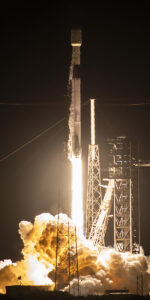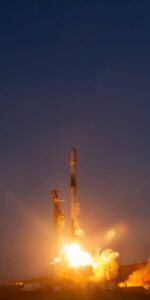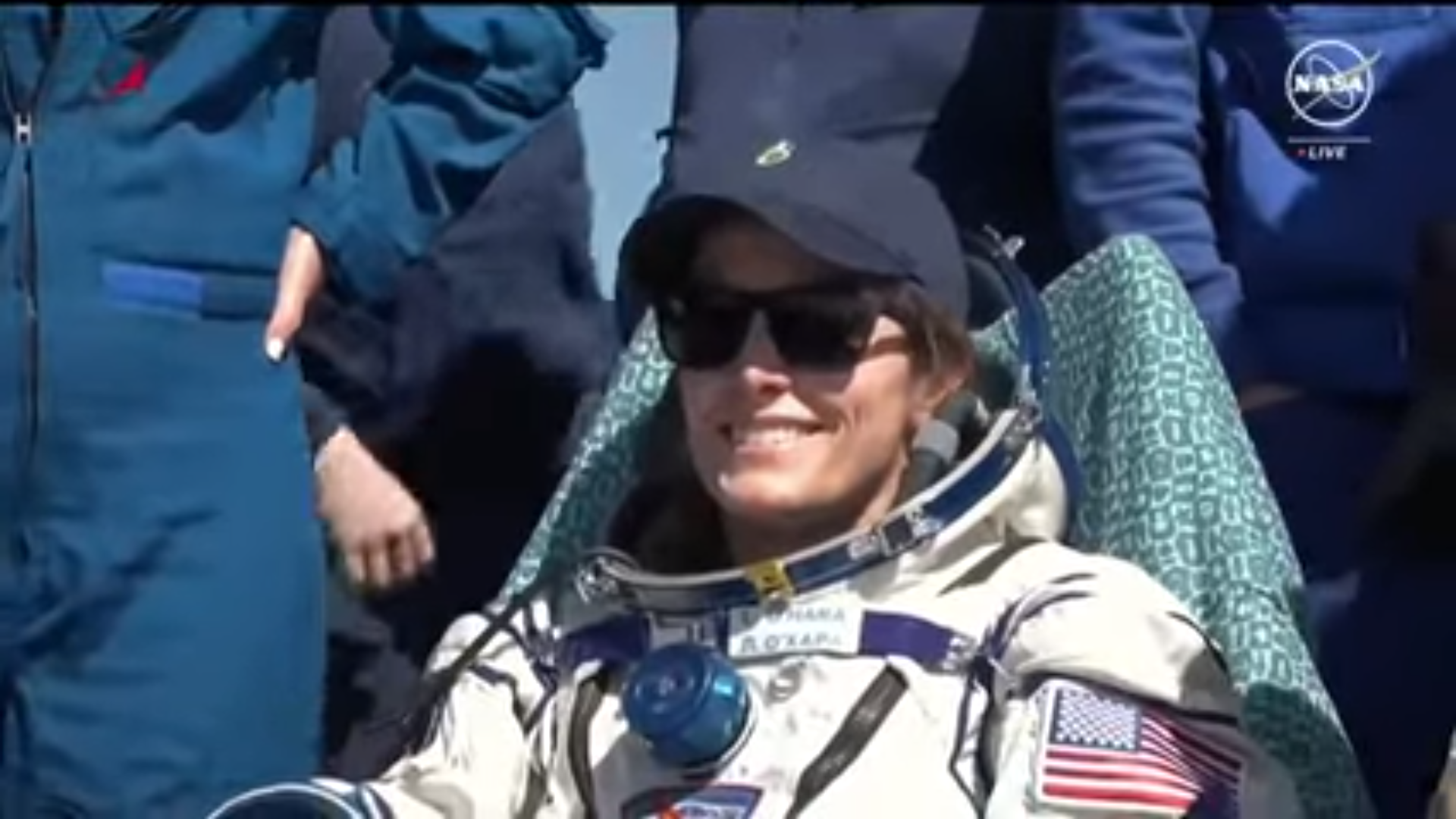
Expedition 71, under the command of the world’s most seasoned space traveler, is officially underway aboard the International Space Station (ISS), following last night’s successful departure and landing of Soyuz MS-24 with crew members from Russia, the United States and the first national cosmonaut of Belarus. NASA’s Loral O’Hara, wrapping up the first spaceflight of her career after 204 days in low-Earth orbit, left the station at 11:54 p.m. EDT Friday and returned to a parachute-aided touchdown in south-central Kazakhstan, shoulder-to-shoulder with Roscosmos veteran Oleg Novitsky and Belarus’ Marina Vasilevskaya at 12:17 p.m. local time (3:17 a.m. EDT) Saturday.
At the instant of touchdown, O’Hara catapulted herself into 11th place on the list of most-traveled female space explorers and completed the fourth-longest mission ever undertaken by a woman, sitting just behind Jessica Meir, former NASA Chief Astronaut and spacewalking supremo Peggy Whitson and the incumbent holder of the record for the longest continuous female spaceflight, future Moon voyager Christina Koch. O’Hara’s flight lasted 203 days, 15 hours and 32 minutes, circled Earth about 3,264 times and covered 86.5 million miles (140 million kilometers) and saw her complete a single session of Extravehicular Activity (EVA) lasting six hours and 42 minutes.
Returning home shoulder-to-shoulder with O’Hara aboard Soyuz MS-24 were Novitsky and Vasilevskaya, who launched to the ISS two weeks ago with NASA’s Tracy Dyson and completed a short mission of 13 days, 18 hours and 40 minutes, 224 Earth orbits and 5.9 million miles (9.5 million kilometers). Last week, the trio completed a standard leak check of their Sokol (“Falcon”) launch and entry suits for the return to Earth.
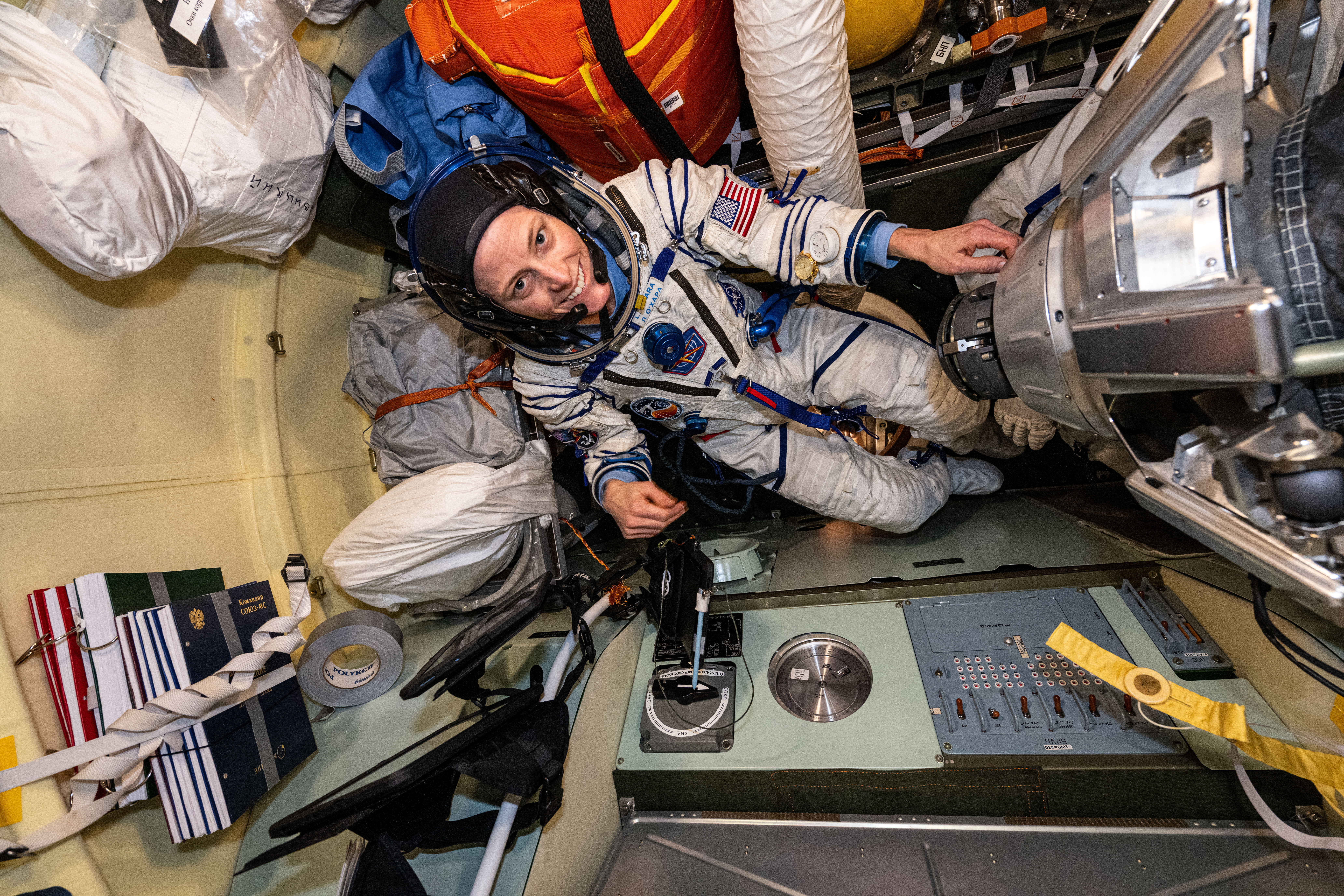
Last night at 8:45 p.m. EDT, hatches between Soyuz MS-24 and the station were closed by Commander Oleg Kononenko. Three hours later, at 11:54 p.m. EDT, hooks opened between the spacecraft and its berth at the Earth-facing (or “nadir”) Rassvet module to permit Soyuz MS-24 to depart for its 3.5-hour homebound return. At the moment of separation, Expedition 70 transitioned directly into Expedition 71, with Kononenko—who had previously commanded the final weeks of Expedition 70 since early last month—slated to remain at the station’s helm until late September.
At the moment of Soyuz MS-24’s separation, the spacecraft and the ISS were orbiting high over Mongolia at an altitude of 260 miles (420 kilometers). A pair of separation “burns” were conducted to depart the immediate vicinity of the station, ahead of the main deorbit burn, lasting four minutes and 41 seconds, to achieve a deceleration rate of 420 feet (128 meters) per second to initiate re-entry.
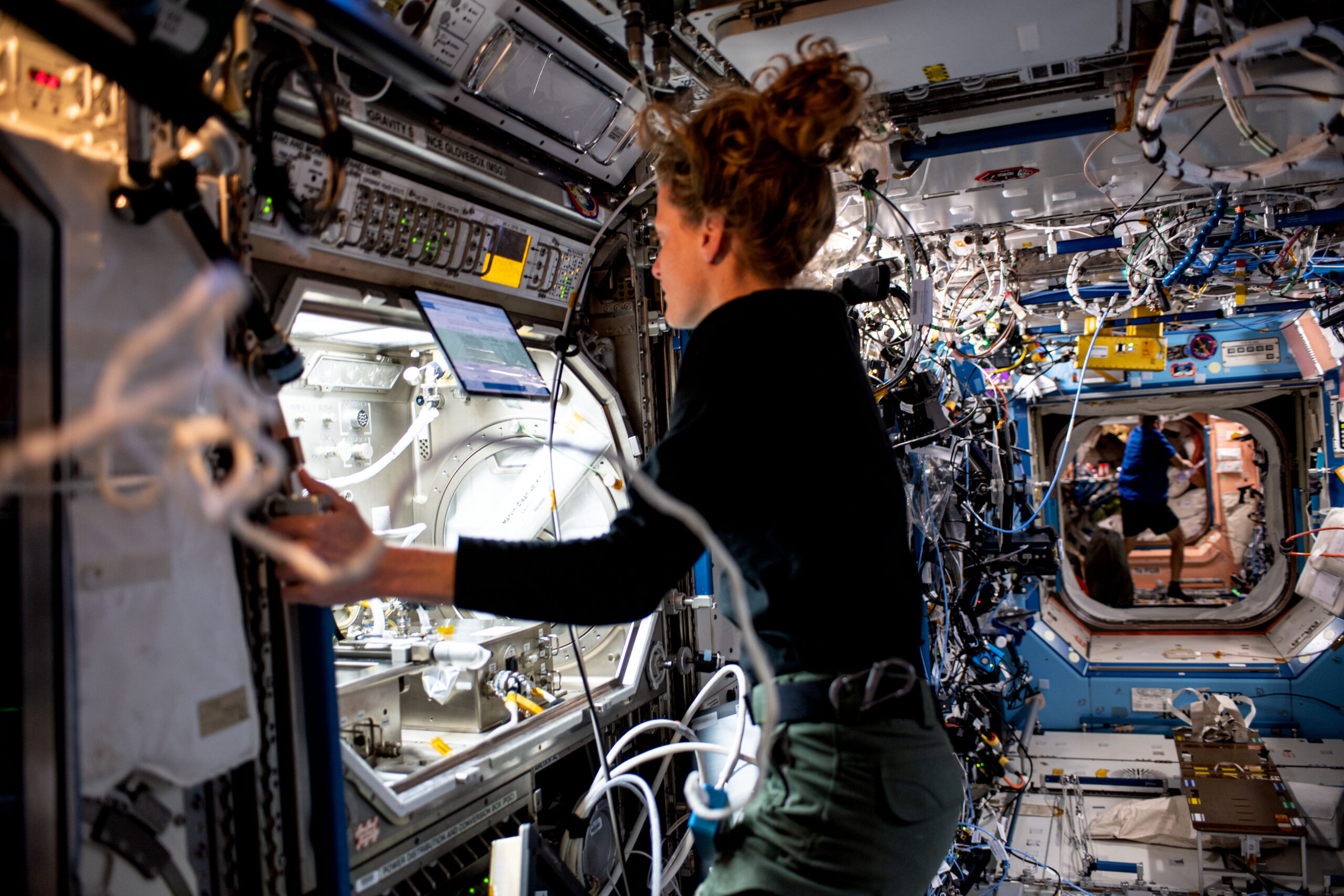
As the deorbit burn concluded, Russian Mi-8 search and rescue helicopters took to the air and headed for the landing site, some 91 miles (146 kilometers) southeast of the mining city of Jezkazgan in south-central Kazakhstan. Landing co-ordinates targeted a touchdown point at 47.24 degrees North latitude and 69.39 degrees East longitude, with NASA’s Rob Navias reporting a balmy springtime day on the desolate Kazakh steppe, with a few clouds at 10,000 feet (3,000 meters), winds of about six knots and temperatures around 15 degrees Celsius (60 degrees Fahrenheit).
Twenty-eight minutes after the deorbit burn, Soyuz MS-24 shed its cylindrical instrument module and spherical orbital module, leaving the bell-shaped descent module to house Novitsky, O’Hara and Vasilevskaya through re-entry temperatures as high as 1,400 degrees Celsius (2,500 degrees Fahrenheit). Descending through the worst of re-entry heating, the spacecraft’s suite of parachutes—first an extraction chute, followed by the drogues and lastly the large orange-and-white canopy—were fully deployed and reefed by an altitude of 6.7 miles (10.8 kilometers), some 14 minutes prior to touchdown.
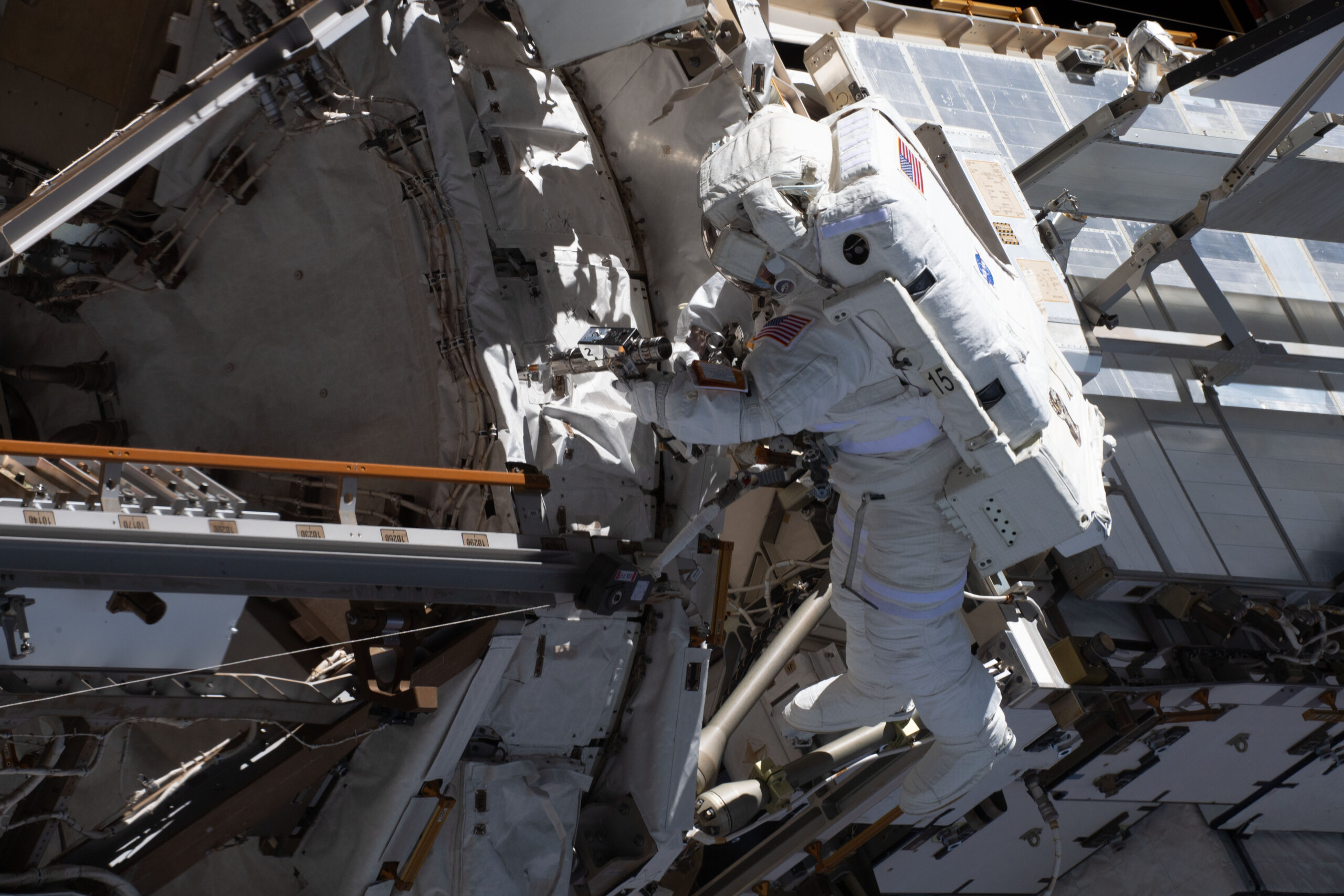
Touchdown at 12:17 p.m. local time (3:17 a.m. EDT) was preceded by the brief burp of landing rockets in Soyuz MS-24’s base to cushion the moment of impact and Novitsky, O’Hara and Vasilevskaya were safely home. Their return leaves Expedition 71 in full swing aboard the ISS under the command of Kononenko, whose 940-and-counting days in space across his five-mission cosmonaut career has put him since February in first place as the most flight-experienced spacefarer in the world.
Early in June, he will become the first human to log a cumulative 1,000 days away from Planet Earth, a record he will extend yet further to more than 1,100 days by the time he returns home in late September. Joining Kononenko are fellow Russians Nikolai Chub and Aleksandr Grebenkin, plus NASA astronauts Matt Dominick, Mike Barratt, Jeanette Epps and Tracy Dyson, with a busy spring and summer ahead.
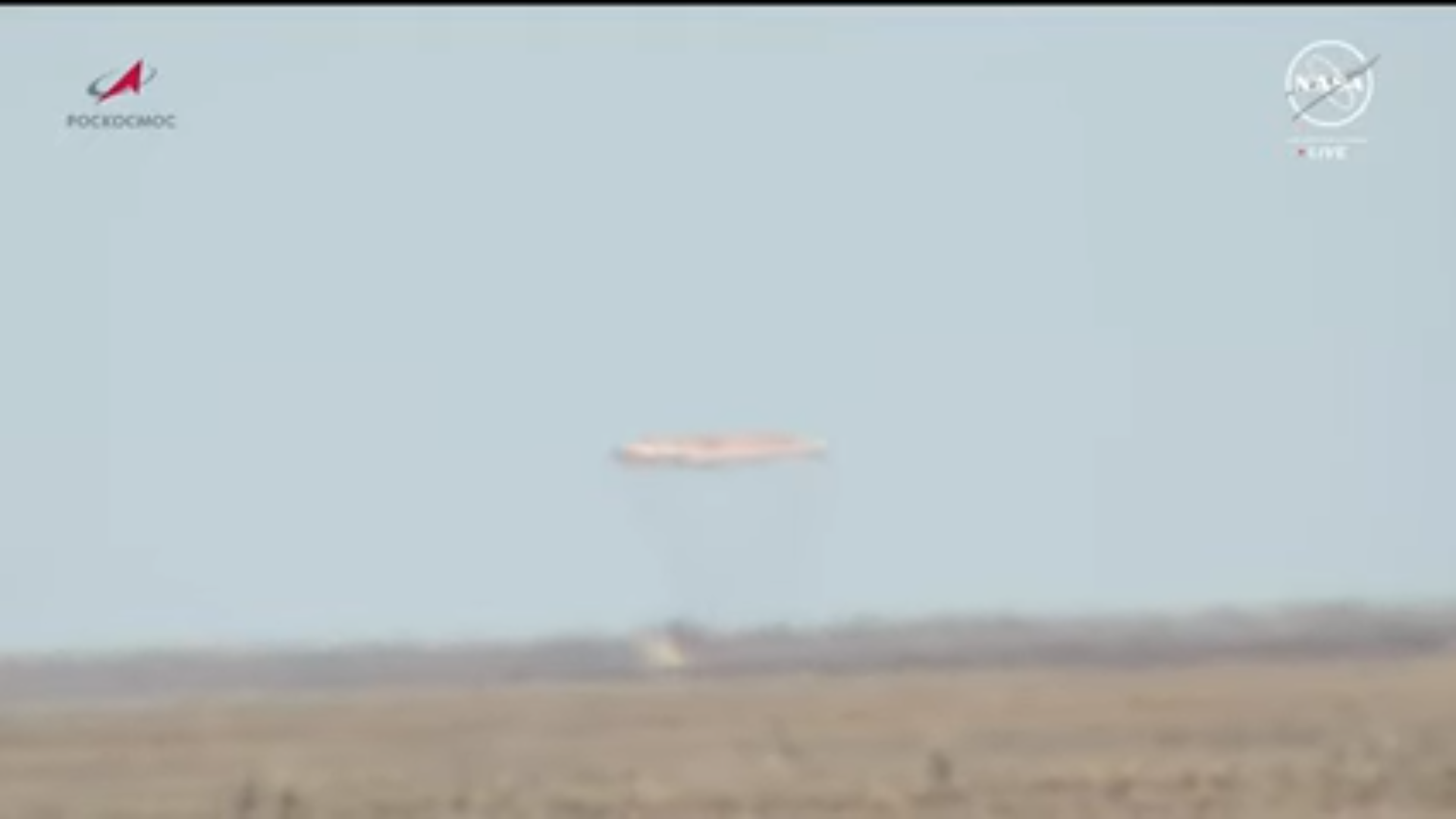
Of note, the crew will oversee the undocking of SpaceX’s CRS-30 Cargo Dragon later this month, as well as the departure of a pair of Russian Progress resupply freighters in June and August and Northrop Grumman Corp.’s NG-20 Cygnus in the July timeframe. And heading to the space station will be two new Progresses, also in June and August, the NG-21 Cygnus in August and perhaps the maiden voyage of Sierra Nevada Corp.’s Dream Chaser cargo vehicle at some point later this summer.
But attention will focus specifically in the coming weeks on the long-awaited Crew Flight Test (CFT) of Boeing’s CST-100 Starliner, targeted to launch from storied Space Launch Complex (SLC)-41 at Cape Canaveral Space Force Station, Fla., no earlier than 6 May, carrying NASA astronauts Barry “Butch” Wilmore and Suni Williams. Their approximately week-long visiting mission will require the transfer No Earlier Than (NET) 30 April of Crew-8’s Dragon Endeavour from its current perch at the forward-facing end of the Harmony node to the space-facing port to accommodate Starliner.




